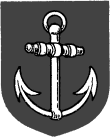
 |
| FIG. 498.--Anchor. |
 |
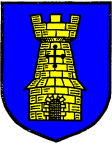 |
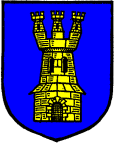 |
| FIG. 499.--Castle. | FIG. 500.--Tower. | FIG. 501.--Tower tripletowered. |
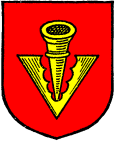 |
| FIG. 502.--Pheon. |
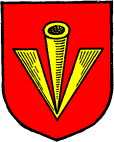 |
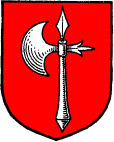 |
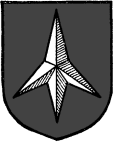 |
| FIG. 503.--Broad arrow. | FIG. 504.--Battle-axe. | FIG. 505.--Caltrap. |
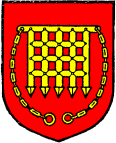 |
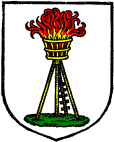 |
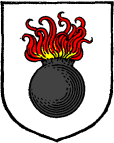 |
| FIG. 506.--Portcullis. | FIG. 507.--Beacon. | FIG. 508.--Grenade. |
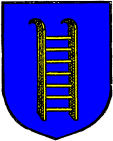 |
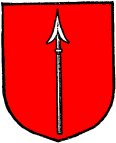 |
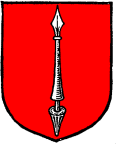 |
| FIG. 509.--Scaling ladder. | FIG. 510.--Lance or javelin. | FIG. 511.--Tilting-spear. |
 |
| FIG. 512.--Arms of William Shakespeare the poet(d. 1616): Or, on a bend sable, a tilting spear of the field. |
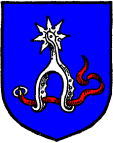 |
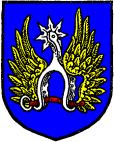 |
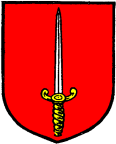 |
| FIG. 513.--Spur. | FIG. 514.--Winged spur. | FIG. 515.--Sword. |
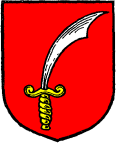 |
| FIG. 516.--Scymitar. |
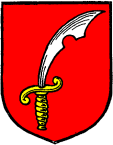 |
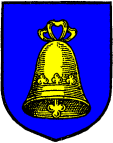 |
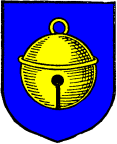 |
| FIG. 517.--Seax. | FIG. 518.--Church-bell. | FIG. 519.--Hawk's bell. |
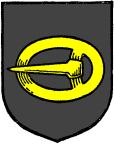 |
| FIG. 520.--Oval buckle. |
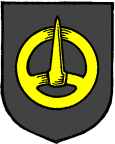 |
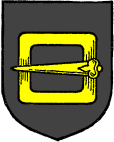 |
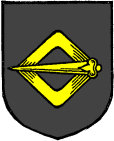 |
| FIG. 521.--Circular buckle. | FIG. 522.--Square buckle. | FIG. 523.--Lozenge-shaped buckle. |
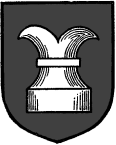 |
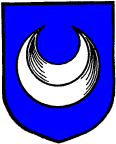 |
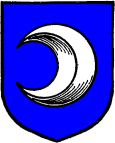 |
| FIG. 524.--Chess-rook. | FIG. 525.--Crescent. | FIG. 526.--Increscent. |
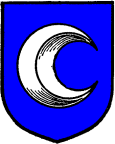 |
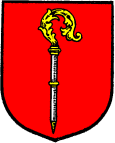 |
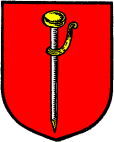 |
| FIG. 527.--Decrescent. | FIG. 528.--Crosier, or pastoral staff. | FIG. 529.--Palmer's staff |
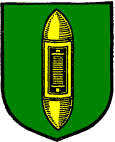 |
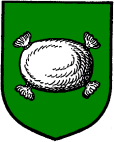 |
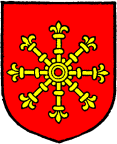 |
| FIG. 530.--Shuttle. | FIG. 531.--Woolpack. | FIG. 532.--Escarbuncle. |
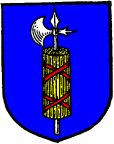 |
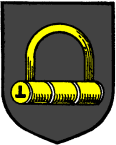 |
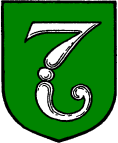 |
| FIG. 533.--Fasces. | FIG. 534.--Fetterlock. | FIG. 535.--Fleam. |
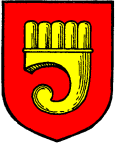 |
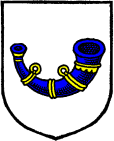 |
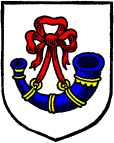 |
| FIG. 536.--Clarion. | FIG. 537.--Bugle-horn. | FIG. 538.--Bugle-horn stringed. |
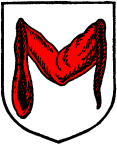 |
| FIG. 539.--Maunch. |
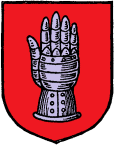 |
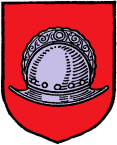 |
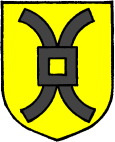 |
| FIG. 540.--Gauntlet. | FIG. 541.--Morion. | FIG. 542.--Mill-rind. |
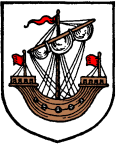 |
| FIG. 543.--Lymphad, sail furled. |
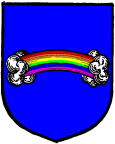 |
| FIG. 544.--Rainbow. |
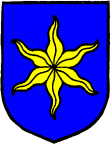 |
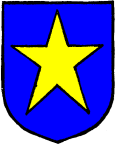 |
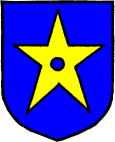 |
| FIG. 545.--Estoile. | FIG. 546.--Mullet (Scottish star). | FIG. 547.--Mullet pierced(Scottish spur-revel). |
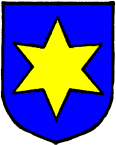 |
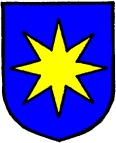 |
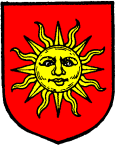 |
| FIG. 548.--Mullet of six points. | FIG. 549.--Mullet of eight points. | FIG. 550.--Sun in splendour. |
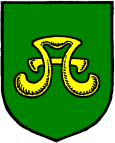 |
| FIG. 551.--Water-bouget. |
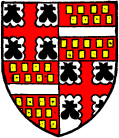 |
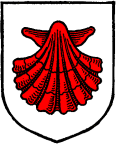 |
| FIG. 552.--Arms of Henry Bourchier, Earl of Essex, K.G.: Quarterly, 1 and 4, argent a cross engrailed gules, between four water-bougets sable (for Bourchier); 2 and 3, gules, billetté or, a fess argent (for Louvain). (From his seal.) | FIG. 553.--Escallop. |
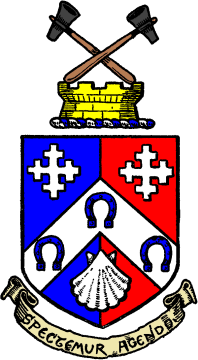 |
![FIG. 555.--Arms of the Great Central Railway: Argent, on a cross gules, voided of the field, between two wings in chief sable and as many daggers erect in base of the second, in the fess point a morion winged of the third, on a chief also of the second a pale of the first, thereon eight arrows saltirewise banded also of the third, between on the dexter side three bendlets enhanced and
on the sinister a fleur-de-lis or. Crest: on a wreath of the colours, a representation of the front of a locomotive engine proper, between two wings or. [The grant is dated February 25, 1898.] FIG. 555.--Arms of the Great Central Railway: Argent, on a cross gules, voided of the field, between two wings in chief sable and as many daggers erect in base of the second, in the fess point a morion winged of the third, on a chief also of the second a pale of the first, thereon eight arrows saltirewise banded also of the third, between on the dexter side three bendlets enhanced and on the sinister a fleur-de-lis or. Crest: on a wreath of the colours, a representation of the front of a locomotive engine proper, between two wings or. [The grant is dated February 25, 1898.]](img/300b.gif) |
| FIG. 554.--Arms of Hammersmith: Party per pale azure and gules, on a chevron between two cross crosslets in chief and an escallop in base argent, three horse-shoes of the first. Crest: on a wreath of the colours, upon the battlements of a tower, two hammers in saltire all proper. Motto: "Spectemur agendo." | FIG. 555.--Arms of the Great Central Railway: Argent, on a cross gules, voided of the field, between two wings in chief sable and as many daggers erect in base of the second, in the fess point a morion winged of the third, on a chief also of the second a pale of the first, thereon eight arrows saltirewise banded also of the third, between on the dexter side three bendlets enhanced and on the sinister a fleur-de-lis or. Crest: on a wreath of the colours, a representation of the front of a locomotive engine proper, between two wings or. [The grant is dated February 25, 1898.] |
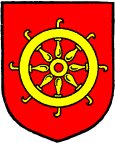 |
| FIG. 556.--Catherine wheel. |
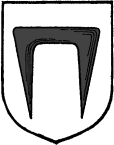 |
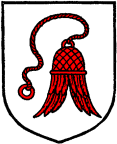 |
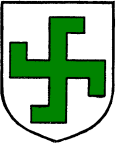 |
| FIG. 557.--Staple. | FIG. 558.--Hawk's Lure. | FIG. 559.--Fylfot. |